


YW531 (VCI Type 63 ) Saumur
English Translation
 |
Le YW531 (Type 63 APC désignation M1967 pour les occidentaux devenu par la suite K63) est le premier VCI chinois et il a été en service dans les forces de l'APL depuis plus de 3 décennies. Après des années de copies pure et simple du matériel militaire soviétique, la Chine commence la construction d'un véritable VCI chinois le YW531 .
Les études ont commencé à la fins des années 50 sur un projet d’un char léger .Le développement initial a été achevé en 1963, et les premiers véhicules sont entrés en service en 1964.
Le modèle a été semble beaucoup améliorée et en 1970 apparait leYW531A suivi du YW 531B en 1981. En 1982, le type a été encore modifié avec le YW531C.
La désignation officielle chinoise pour ce véhicule est type 63, mais au sein de l'armée chinoise, il est désigné comme le type 531. Le YW 531 est très rapide et possède d’excellentes qualités Tout terrain. IL a été conçu pour le transport de personnel, de matériel sur le champ de bataille, et peut également être utilisé pour la reconnaissance .
Histoire
La Chine a une spécialité: la copie et le matériel militaire n’échappe pas à cette règle
Pendant de nombreuses années, la Chine a produit des copies de matériel russe, ( véhicules avions), mais au cours de la fin des années 1950 NORINCO (China North Industries Corporation???B?if?ng G?ngyè) commencent des études sur un nouveau VCI le Type 63 ou YW 531C
Ce véhicule est très simple comme l’américain M 113 c’est une « boite »blindée avec une mitrailleuse de 12.7 mm
Le véhicule possède une coque en acier soudé, dans lequel le conducteur est assis à l'avant gauche avec un autre membre d'équipage directement derrière lui, et le commandant se trouve dans l'avant droit avec le moteur derrière lui . Un tireur se trouve dans le centre du véhicule, les passagers sont assis sur les sièges dans le compartiment arrière Le blindage fournit peu de protection contre la mitraille du champ de bataille Les balles de 7.62m peuvent même percer celle-ci Il est totalement amphibie et il est propulsé dans l'eau par ces chenilles et possède une petite pompe dans le châssis .
Le développement a été effectué sur la base d’un projet de char léger par l'usine 618, (North Vehicle Manufacturing Factory pres de Pékin ou Beijing, ) avec l’aide du MOI (Ministry of Ordnance Industry) et du 30e Research Laboratory
Le défi était de construire un 13 tonnes pouvant transporter jusqu'à 13 soldats à une vitesse allant jusqu'à 60 km / h sur terre et de 6 km / h dans l'eau. Il est également équipé de périscopes d'observation. Ce véhicule a été développé de façon indépendante, sans l'aide soviétique. Mais, le premier lot de type 63 (connu sous le nom de YW531) a souffert de graves problèmes, et les améliorations pour cette version ne sont arrivées qu’en 1970
Les améliorations apportées au Type 63 en 70. Sont les suivantes
Réchauffe du moteur afin d’en améliorer les performances en période hivernale
Mise ne place d’une mitrailleuse de 12.7 mm en lieu et place de celle de7.62mm
Allongement de la coque donnant plus de confort aux passagers arrières
réduction de la taille des galets de roulements et adoption de bandages caoutchouc intégrés Au début le premier moteur était une copie du moteur du T34 B2-34 Une deuxième amélioration a eu lieu dans les années 80 avec le Type 63C (YW531C) adopté sur les modèles export en 1982.
Cette variante utilise un moteur diesel allemand Deutz BF8L413F refroidi par air à la place de l'original Type 6150L (moteurs refroidi par eau)
Une nouvelle transmission hydraulique, une nouvelle direction, un système anti incendie automatique, un système permettant de créer un écran de fumée, un système de protection NBC et la possibilité de monter un canon ou mitrailleuse comme armement principal.
Il a été exporté en grand nombre en Irak, Pakistan, Sri Lanka et Bangladesh.
Ces versions améliorées sont toujours en service auprès de l'APL
Le Type 85 Armored Personnel Carrier, également connu sous le nom de YW 531H ou M-1967 , est le successeur du YW 531 avec 5 galets de roulements au lieu des 4 de son prédécesseur.
Cette version et ses dérivés sont plus lourdement blindés et les plus nombreux sur les marchés de l’export. Ce véhicule est en service dans un certain nombre de pays en Asie, en Afrique et au Moyen-Orient et a servi au Vietnam dans les Guerres du Moyen Orient et du Golfe. Les utilisateurs sont l'Albanie, la Chine, l'Irak, la Corée du Nord, Soudan, Tanzanie, Vietnam et le Zaïre.
Pour la compréhension. Traditionnellement les armements chinois recevaient la nomenclature suivante un T suivit des deux chiffres l'année de fabrication
De nos jours les appellations sont basées sur une combinaison de lettres et de chiffres qui sont indépendants de l'année de fabrication.
Ainsi, un YW désigne un VCI et WZ désigne un véhicule armé.
Description
Le YW Type 531 a une coque soudé et est totalement amphibie, propulsée dans l'eau par ses chenilles. Avant d'entrer dans l'eau, l’équipage met en route les pompes de cale. La coque du YW 531 est faite tout en acier soudé divisé en cinq compartiments principaux: celui du pilote, celui du chef de char, celui arrière pour les fantassins transportes celui du moteur et celui des mécanismes de transmission,
Le train de roulement est à barre de torsion avec 4/5 galets de roulement avec bandage caoutchouc le Barbotin se trouve à l avant la poulie tendeuse(galet de retour ) à l'arrière
Au début le Type 63 était mu par un moteur 235kW 6150L 6-cylindres diesel à refroidissement liquide. Ce moteur est dérivé du moteur du char T-34 le B2-34 mis au point dans les années 1930. Après le Type 63C est équipé d'un moteur turbo diesel allemand BF8L413F V-8-cylindres refroidi par air, Le moteur refroidi par air et le mécanisme de transmission sont situés à l'avant droit de la coque, Le reste du véhicule est isole des brui et des vibrations par des parois Les aérations se trouvent sur le toit alors que l’échappement se trouve sur le côté droit Le blindage procure de protection contre tout projectile supérieur à un calibre de 12,7 mm, et même de certaines séries du calibre 7.62mm peut percer le blindage
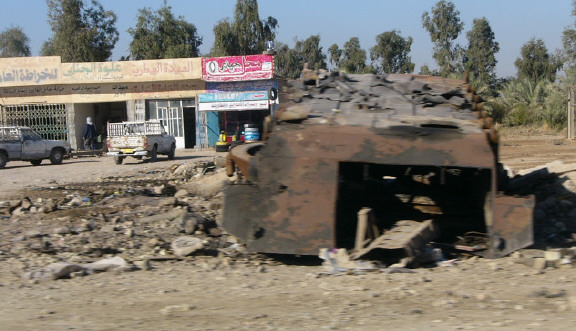 |
| Internet |
Le conducteur est assis à l'avant de la coque sur le côté gauche avec une trappe s'ouvrant sur la gauche, avec 2 épiscopes de vision diurne . L'un des deux peut être remplacé par un dispositif de vision nocturne
Le commandant est assis à l'avant de la coque sur le côté droit Sa trappe s’ouvre sur la droite et possède un épiscope de vision diurne mobile sur 360 °. Sur les version C et D ce poste là est supprimé
Pour le 3e homme derrière le conducteur on trouve une trappe avec un épiscope mobile sur 360 ° s’ouvre sur la gauche avec un périscope à l'arrière du véhicule pouvant recevoir un armement (mitrailleuse Type 54 12.7mm tirant vers avant C’est la copie de la mitrailleuse russe de 12,7 M1938/46 DShKM).
Le compartiment arrière abrite des soldats qui peuvent entrer et de sortir du véhicule par une porte à l'arrière de la coque, qui est articulée sur le côté droit
Le Type 531 YW peut traverser une tranchée de 2 mètres, franchir une obstacle vertical de 0,6-mètre, grimper une pente de 60° et un devers de 40 ° Il est aussi amphibie.
Versions
YW531: version de base, pas produit en masse
YW 531A Production variante avec mitrailleuse de 12,7 mm
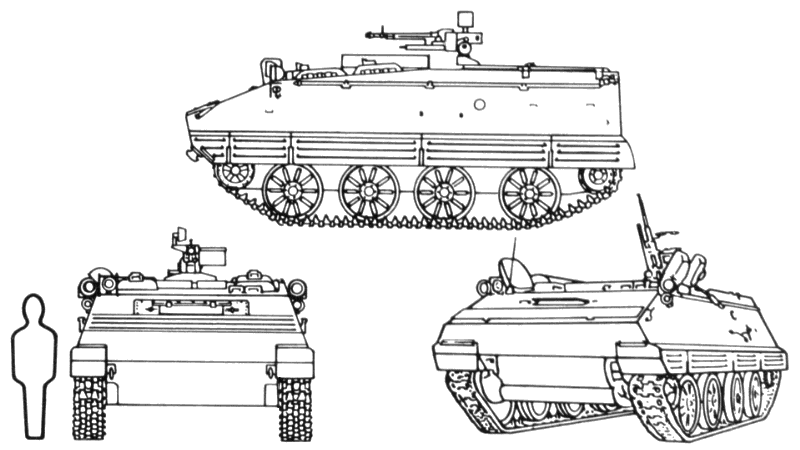 |
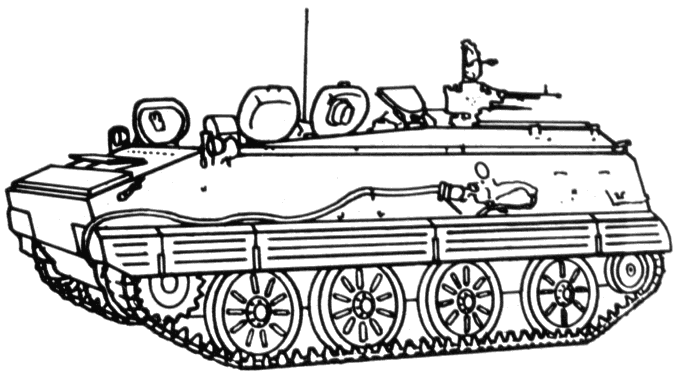 |
| Internet |
YW 531 B: Allongée avec cinq galets . Utilisé comme châssis de l’obusier Type 70 SP
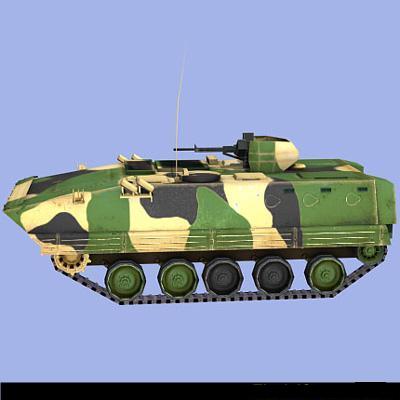 |
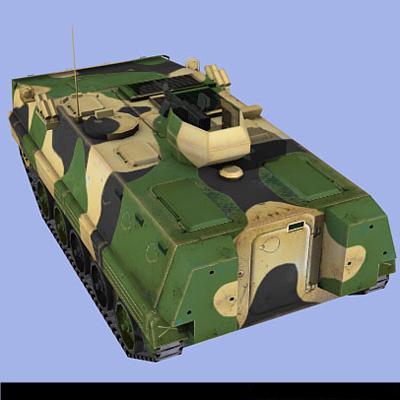 |
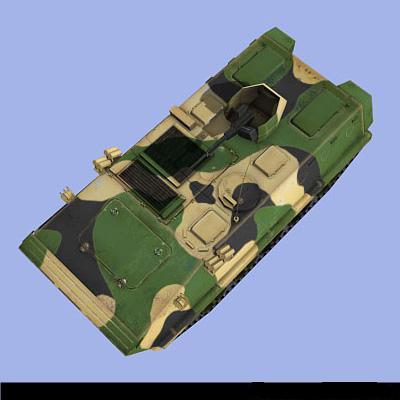 |
| Internet | Internet | Internet |
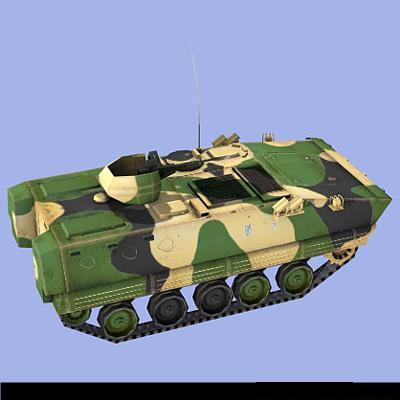 |
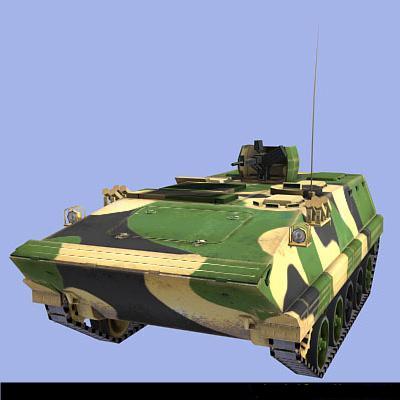 |
 |
| Internet | Internet | Internet |
YW 531C motorisé avec un Deutz BF8L413F diesel refroidi par air remplaçant le Deutz Type 6150L diesel refroidi à l'eau
Nouvelle transmission hydraulique, direction ,extincteur automatique, système générateur de fumée , protection NBC Armement canon ou MG
YW 701 véhicule de poste de commandement. Cette version a le même châssis et la coque que le 'YW 750 ambulance.
Le véhicule a une vitesse maximale sur route de 60 km / h, un équipage de trois personnes et peut transporter cinq passagers lorsqu'ils sont utilisés dans le rôle de commandement. Il a été utilisé par les commandants de régiment et de division. Propulsé par un modèle 6150L 6-cylindres en ligne refroidi par eau 260 CV diesel
armement 7,62-mm Type 56-1 mitrailleuse légère
Le type 701A a une mitrailleuse 12,7-mm
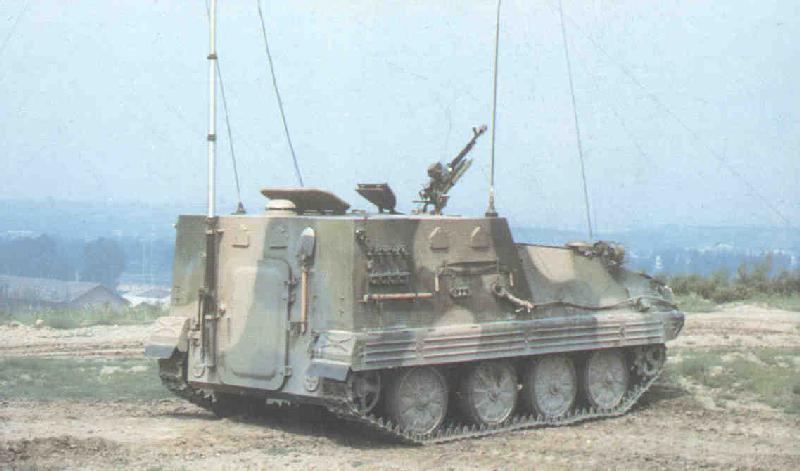 |
| Internet |
Poste de commandement version 'exportation. Le compartiment arrière occupe la moitié du véhicule, il possède 5 radios. Il est propulsé par le même moteur diesel de 320 chevaux que la version VCI Il est armé avec une mitrailleuse de 12,7
YW 750 Ambulance. Il a un équipage de deux médecins et deux infirmiers , et peut transporter quatre civières ou huit blessés assis
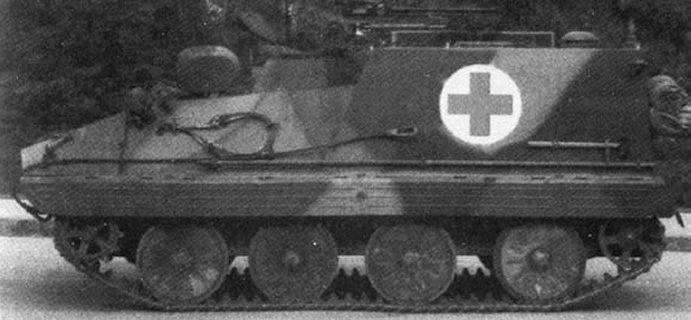 |
 |
| Internet | Internet |
.
Type 54-1 122-mm SPH. Obusier S122 mm Il est un peu plus large que le Type YW 531. L'obusier de 122 mm se trouve placé dans le compartiment arrière.
Type 70 LRM 130-mm 19-Tubes Propulsé par un moteur diesel 6150L 6-cylindres en ligne, 4-cycle, refroidi à l'eau 260 CV .
YW 304 porte mortier type 82 mm avec 120 coups en caisse . Ce véhicule est équipé d'une platine montée pour pouvoir mettre en œuvre le mortier de 82 mm Il est identique au Type YW 531 VCI.
. Le mortier peut être démonté pour l'usage terrestre
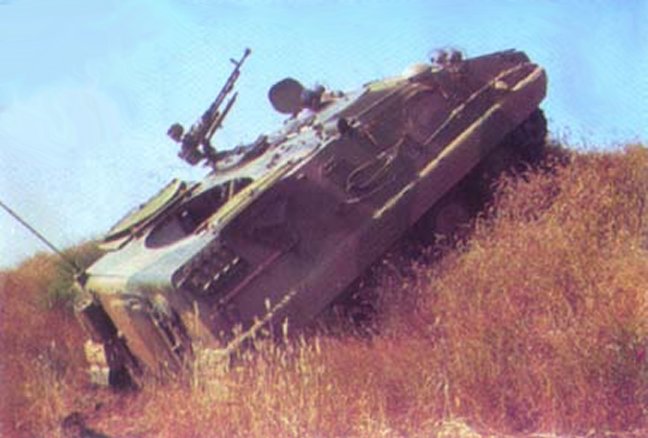 |
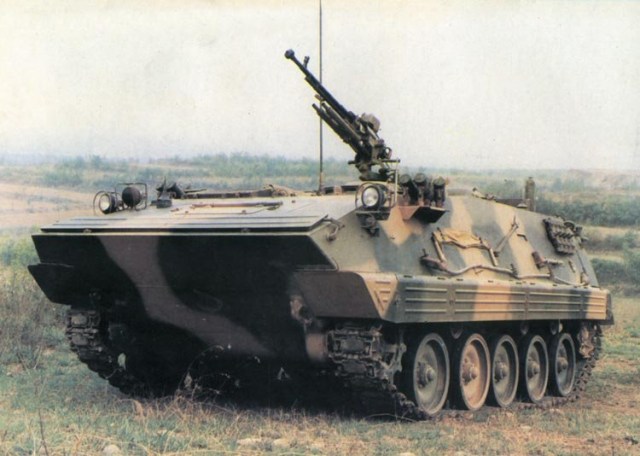 |
| Internet |
Une mitrailleuse de 12.7 mm est montée sur le côté gauche du toit alimentée avec 560 coups Son équipage est de six ou huit hommes
Type YW 381 porte mortier de120-mm équipé d'un mortier type W86 de 120 mm avec une réserve de 50 obus de mortier. Plaque de base trépied et tubes peuvent être utilisés à terre
Une mitrailleuse de 12,7-mm est utilisée pour la défense anti-aérienne et la défense de l engin. Le véhicule a un équipage de six personnes et ressemble beaucoup au YW 304 82-mm, mais il a une longueur de 6.125 mètres, une largeur de 3,06 mètres, une hauteur de 2.593 mètres.
Véhicule Anti-char. Prototype équipé d'une tourelle sur la partie l'arrière avec quatre Red Arrow 8 ATGW prêt au lancement Des missiles supplémentaires sont transportes en coque
 |
| Internet |
Version guerre psychologique. Cette version est équipée de haut-parleur monté sur le toit.
Version Depannage
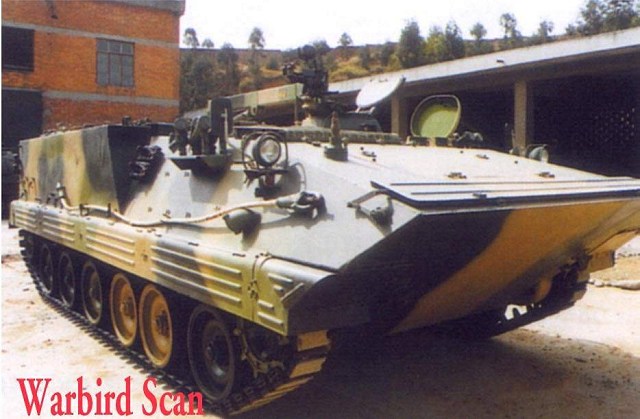 |
| Internet |
M1973 ou VTT-323, la version nord-coréenne, il a une tourelle à deux canons 14,5 mm. Certaines versions ont des missiles Susong-Po (version locale du AT-3/SAGGER ) des missiles transportables
Il peut transporter jusqu'à 13 soldats.
.jpg) |
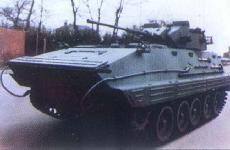 |
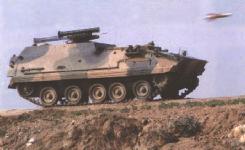 |
| Susong Po | NVH 4 | YW 534 |
Caractéristiques

Poids: 12.6t
Dimensions
Longueur: 5.476m
Hauteur: 2.580m
Largeur: 2.978m
Equipage: 2
Passagers: 13
Moteur: 235kW 6150L 6-cylindres diesel à refroidissement liquide ou BF8L413F V 8-cylindres refroidi par air, turbo-diesel
Autonomie: 500 km
Vitesse Max route 60 km / h (YW531) ou 65 km / h (YW531C); max /eau 6 km / h
Arme: selon Versions en moyenne mitrailleuse 12,7 mm
Autre Photoscope (Other Walk Around ) 1
YW531 (Type 63 APC) Saumur
 |
The YW531 (Type 63 APC western designation was M1967, subsequently K63) is the first Chinese APC and he has been in service with the PLA armoured forces for over three decades. After years of copies upon soviet military material China Beging the construction of a genuine Chinese APC the YW531 s The Studies started in lates 50’s on a design based on a previous light tank design. Initial development was completed in 1963, and the first vehicles entered service in 1964.
After in 1970 The YW531A model appeared and the much improved YW 531B in 1981. In 1982 the type was further improved and named the YW531C. The official Chinese designation for this vehicle is the Type 63 but within the Chinese Army it is referred to as the Type 531. The YW 531 has excellent cross country mobility. The vehicle was designed to carry personnel, cargo, and equipment in the battlefield, and can also be used for reconnaissance role.
History
China as a speciality: the Copy and military materials don’t escape at this shceme
For many years China produced copies of Russian vehicles but during the late 1950s NORINCO ( China North Industries Corporation ???B?if?ng G?ngyè ) begin studies upon a new APC the Tpe 63 or YW 531C
This vehicle was very simple like the US M 113 with an armored box with a 12.7 mm machine gun mounted on top.
The vehicle would be have a welded steel hull, in which the driver sits at the left front with an additional crewman directly behind him, and the commander sits in the right front with the engine behind. A gunner sits in the centre of the vehicle, with the infantryman sitting on fold down seats in the troop compartment. The armor provides little protection against anything larger than an M60 machine gun, and even some 7.62mm rounds hole the armor. It is fully amphibious it is propelled in the water by its tracks and has a small trim vane on the glacis plate.
The development was based was on a previous light tank design. I and he was conducted by factory 618th ,( North Vehicle Manufacturing Factory located near Beijing, ) with the assistance of MOI (Ministry of Ordnance Industry) and the Research Laboratory 30th
The challenge was to built a 13 tons designed to carry up to 13 troops and could reach speeds of up to 60 km/h on land and 6 km/h in water. It is also fitted with periscopes for observation. This vehicle was developed independently without Soviet assistance. Also the initial batch of the Type 63 (known as YW531) suffered from serious problems, and the improved formal production variant did not enter service until 1970
Improvements to the Type 63 APC were made in the 70s. The newly improved Type 63-1 Tracked APC had a heater for enhance engine performance during the winter, and changing of the 7.62 mm machine gun to a 12.7mm machine gun. The hull of the APC was also lengthened increasing the size of the crew compartment. The wheels of the APC were reduced in size and the tracks incorporated rubber track blocks.At the beginning the first engine was a copy of the russion emgine of the T 34 A second improvement took place in the 80’s with the Type 63C (YW531C) was introduced in 1982 for export market.
This variant uses a German-designed Deutz BF8L413F air-cooled diesel engine to replace the original s diesel Deutz Type 6150L water-cooled liquid-cooled engine.
A new hydraulically changed transmission, secondary planetary steering mechanism ,hydraulic booster system an automatic fire extinguisher, a smoke-laying system, an NBC protection system and a cannon or machine gun as main armament.
He was exported in significant numbers to Iraq, Pakistan, Sri Lanka, and Bangladesh.
The improved variants are always in service with the PLA
The Type 85 Armored Personnel Carrier, also known as YW 531H and the M-1967 APC, is the successor to the YW 531 with 5 roadwheels rather than the 4 roadwheels of its predecessor.
This Type 63 and its derivatives are the most numerous and most heavily exported armored vehicle. This vehicle is in service with a number of countries in Asia, Africa and the Middle East and saw service in Vietnam wars and with Iraq in the Gulf War. Users include Albania, China, Iraq, North Korea, Sudan, Tanzania, Vietnam and Zaire.
For the comprehension . Traditionally Chinese weapons were given a simple 'Type' designator consisting of a two digit year of manufacture or proposal followed by the Chinese word for 'type', and the description of the weapon.
But now designations have been based on a combination of letters and numbers that are independent of the year of manufacture.
Thus, a YW represents Armored Personnel Carrier and a WZ represents Armed Vehicle.
Description
Type YW 531 has an all-welded hull and is fully amphibious, being propelled through the water by its tracks. Before enter in water a break water is unfold and pompe were actived. The hull of the YW 531 is made of all-welded steel This welded steel hull is divided into five main compartments: driver, commander, troop, engine, and transmission mechanisms he has torsion-bar suspension with each side having four single rubber-tired road wheels, a drive sprocket at the front, idler at the rear and no track return rollers.The early Type 63 is powered by an indigenous 235kW 6150L 6-cylinder liquid-cooled diesel. This engine was derived from the Soviet T-34 tank's B2-34 engine introduced in the 1930s. After on Type 63C is fitted with a German-designed BF8L413F V 8-cylinder air-cooled, turbo-charged diesel. The air-cooled engine and the transmission mechanism are located at the right front of the hull, isolated from the rest of the vehicle with noise/vibration-proof walls The air-inlet and air-outlet louvers in the roof and the exhaust outlet in the right side of the roof. Thea rmour give little protection against anything larger than a 12.7mm machine gun, and even some 7.62mm rounds can hole the armour
 |
| Internet |
The driver sits at the front of the hull on the left side and has a single-piece domed hatch cover that opens to the left, in front of which are two day periscopes. One of these can be replaced by a night vision device.,
The commander sits at the front of the hull on the right side and has a single-piece hatch cover opening to the right with an integral day periscope that can be traversed through 360°. The commander's position was deleted on the later C and D versions
The commander's single-piece hatch cover that opens to the right with an integral periscope, a single-domed hatch cover for the third crew member that opens to the left with an integral periscope and a gunner's hatch to the rear of the vehicle with a 12.7-mm Type 54 heavy machine gun mounted on the forward part. There is also another gunner's single-piece hatch cover A third crew member could be seated behind the driver and has a single-piece domed hatch cover that opens to the left, with an integral day periscope that can be traversed through 360°.
Mounted on the forward part of the gunner's hatch is a 12.7 mm heavy machine gun Type 54 (copy of Russian 12.7mm M1938/46 DShKM.. )The troop compartment is at the rear Soldiers enter and leave the vehicle by a door in the rear of the hull, which is hinged on the right side There is a single firing port in each side of the hull
The Type YW 531 can cross a 2 meter trench, mount a 0.6-meter vertical step, climb a 60-percent grade, climb a 40-percent side slope and ford amphibiously.
Versions
YW531: Basic version, not mass-produced
YW 531A Production variant with 12.7 mm machine gun
 |
 |
| Internet |
YW 531 B: Stretched version with five road-wheels . Used as the chassis of the Type 70 SP howitzer
 |
 |
 |
| Internet | Internet | Internet |
 |
 |
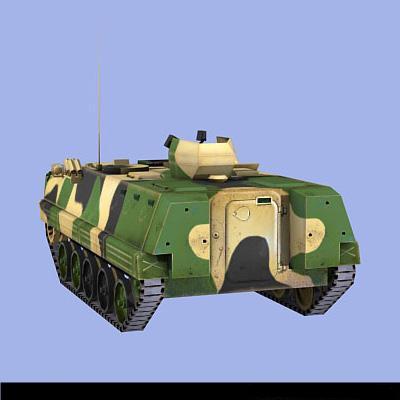 |
| Internet | Internet | Internet |
YW 531C a Deutz BF8L413F air-cooled diesel enginein replacement of the Deutz Type 6150L water-cooled diesel by, new hydraulically changed transmission, secondary planetary steering mechanism ,hydraulic booster system
an automatic fire extinguisher, a smoke-laying system, an NBC protection system and a cannon or machine gun as main armament
Type YW 701 Command Post Vehicle. This version has a similar chassis and hull to the YW 750 ambulance.
The vehicle has a maximum road speed of 60 km/h, a crew of three and can carry five passengers when being used in the command role. He was used by regiment and division commanders. Powered by a model 6150L inline, 6-cylinder, 4-cycle, water-cooled 260 HP diesel engine Armament 7.62-mm Type 56-1 light machine gun
The Type YW 701A has a 12.7-mm anti-aircraft machine gun
 |
| Internet |
Command post variant for Export. Has a box compartment over rear half of vehicle, and 5 radios. Powered by same 320 HP diesel engine as the APC version. Armament is a 12.7mm MG.
Ambulance. This vehicle has the Chinese designation YW750. It has a crew of two plus two doctors and can carry four stretcher or eight seated patients
 |
 |
| Internet | Internet |
.
Type 54-1 122-mm SPH. Armament s122 mm self-propelled howitzer It is a longer and slightly wider Type YW 531. The 122-mm howitzer sits in an open-topped troop compartment.
Type 70 MRLS Armament MRLS 130-mm 19-barrel multiple rocket launcher. Powered by a model 6150L inline, 6-cylinder, 4-cycle, water-cooled 260 HP diesel engine.
Type YW 304 82-mm Self-propelled Mortar. This vehicle is fitted with a turntable-mounted 82-mm mortar with a basic load of 120 rounds He was identical to the Type YW 531 APC.
 |
 |
| Internet |
. The mortar can be dismounted for ground use. A 12.7-mm machine gun is mounted on the left side of the turret roof with an ammunition load of 560 rounds. The Type YW 304 has a crew of six or eight
Type YW 381 120-mm Self-propelled Mortar. fitted with a W86 120-mm mortar with an ammunition load of 50 mortar bombs. Base plate and tripod are carried externally to allow the mortar to be dismounted for use in the ground role.
He has also a 12.7-mm machine gun is fitted for anti-aircraft and local defense. The vehicle has a crew of six and although similar in appearance to the YW 304 82-mm but he has a length of 6.125 meters, a width of 3.06 meters, a height of 2.593 meters .
Anti-tank Vehicle. Prototype fitted with a turret on the hull top towards the rear with four Red Arrow 8 ATGWs ready to launch.
Additional missiles are carried inside for manual reloading.
 |
| Internet |
Psychological Warfare. This version is fitted with roof-mounted loudspeakers.
ARV Version
 |
| Internet |
M1973 or VTT-323, North Korean variant, he has a turret with twin 14.5mm guns. Some versions have Susong-Po (AT-3/SAGGER variant) ATGM launcher and SA-7/16 manportable SAMs.
the version as show in this photo mounts a double 14.5 mm HMG in the turret and 1 7.62 mm MG, in this version are present also 4 MANPADS on the rear against short range air attacks such against attack helicopters and attack aircrafts.
Another version on the rear doesn't mount MANPADS instead a 18 tube 107 mm MRL or several Sosung Po anti tank missiles, a local version of the older AT-3. A 14.5 mm HMG is present in those variants on the front left on the vehicle.
It can carry up to 13 troops.
.jpg) |
 |
 |
| Susong Po | NVH 4 | YW 534 |
Technical data

Weight: 12.6t
Dimension
Length: 5.476m
Height: 2.580m
Width: 2.978m
Crew: 2
Passenger: 13
Engine: 235kW 6150L 6-cylinder liquid-cooled diesel / or BF8L413F V 8-cylinder air-cooled, turbo-charged diesel
Cruising Range: 500km
Speed: Max road 60km/h (YW531) or 65km/h (YW531C); max swim 6km/h
Weapon: Version APC 12.7mm